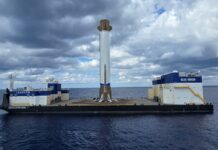Astronomers have unveiled a stunningly detailed radio image of our Milky Way galaxy, captured from the unique perspective of the Southern Hemisphere. This groundbreaking achievement represents the largest and most intricate low-frequency radio picture ever produced, revealing hidden celestial wonders invisible to traditional optical telescopes.
The striking image isn’t an artist’s abstract interpretation but a meticulously constructed map of our galactic neighborhood. Utilizing radio waves rather than visible light, it illuminates previously obscured features across the vast expanse of space. The vibrant copper and green tones that paint the image aren’t mere aesthetic choices; they represent different radio wavelengths, each color-coding distinct astrophysical phenomena.
This unprecedented clarity unlocks a treasure trove of information for astronomers studying stellar birth, death, and transformation within our galaxy’s southern sky.
“What we’ve done here is colored those low frequencies red, and so those correspond to areas in the sky where there is more emission at those low frequencies,” explains Natasha Hurley-Walker, a professor at Curtin University in Australia and key contributor to the project. “We’ve colored the higher frequencies blue, and those are areas of the sky where there is more emission at the high frequencies.”
Hurley-Walker emphasizes that these distinct radio colors allow researchers to decipher the complex interplay of forces shaping our galaxy.
Unveiling Cosmic Mysteries with Radio Waves
Radio astronomy has revolutionized our understanding of the Milky Way over the past century. Unlike visible light telescopes, these instruments detect invisible radio waves emanating from celestial objects, enabling scientists to map the galaxy’s intricate structure and unravel its composition. As technology advanced, so too did the resolution of radio images, pushing the boundaries of what we can observe.
This latest project focused intensely on the Milky Way’s Galactic Plane – a flat, densely packed region teeming with stars and gas. Through meticulous analysis of massive datasets collected by the Murchison Widefield Array (MWA), a powerful radio telescope in Western Australia, the team identified nearly 98,000 distinct radio sources.
These include dazzling H II regions — glowing gas clouds surrounding stellar nurseries where new stars ignite; ethereal planetary nebulae, remnants of dying stars casting off their outer layers; and even distant galaxies shrouded in cosmic dust. The comprehensive findings were recently published in the journal Publications of the Astronomical Society of Australia.
A Glimpse into Stellar Life Cycles
Silvia Mantovanini, a doctoral student at Curtin University led by Hurley-Walker, spearheaded this monumental project, meticulously piecing together over 40,000 hours’ worth of data using supercomputers. Mantovanini’s expertise lies in supernova remnants – the vast, expanding shells of gas left behind after massive stars explode.
“The first time I saw the image, I thought, ‘Oh my God, I did it,’” Mantovanini recalled upon witnessing the final result.
In conventional images, these remnants and regions where new stars are forming appear indistinguishable due to their similar shapes. However, the intricate radio wave data reveals vibrant differences. Supernova remnants stand out as large red circles in this image, while nascent star-forming sites appear as smaller blue blobs. This enhanced differentiation opens up unprecedented opportunities for detailed study.
Illuminating Pulsars and Galactic Structure
Beyond supernova remnants, the new dataset offers invaluable insights into pulsars – rapidly rotating neutron stars emitting beams of radio waves like celestial lighthouses. By analyzing their brightness at different frequencies, astronomers can pinpoint their exact location within the galaxy and glean crucial information about how these enigmatic objects generate their signals.
This extraordinary image is twice as sharp, ten times more sensitive, and covers double the area compared to its predecessor from six years ago. This drastic improvement allows researchers to probe fainter and more distant structures with unprecedented clarity.
“I am looking forward to … what other scientists can get out of this data,” Mantovanini concludes. This remarkable achievement marks a significant leap forward in our quest to understand the Milky Way, revealing intricate cosmic details that were once hidden from view. The wealth of information contained within this stunning image promises to fuel countless new discoveries and deepen our appreciation for the magnificent galaxy we call home.






































































